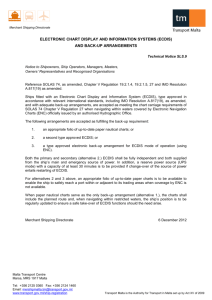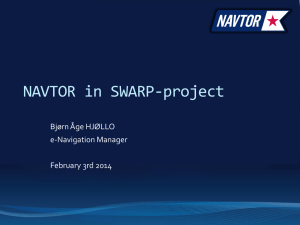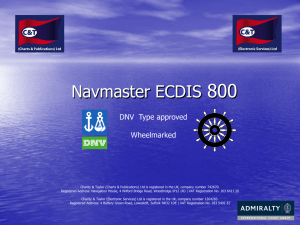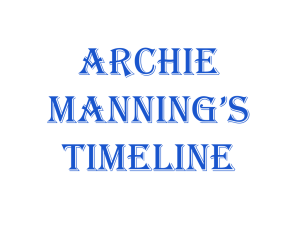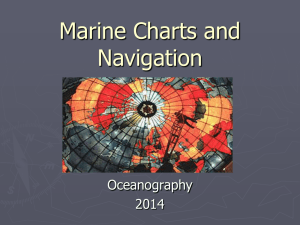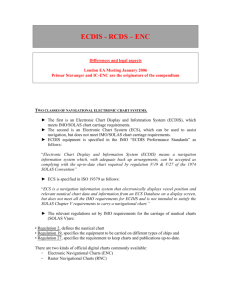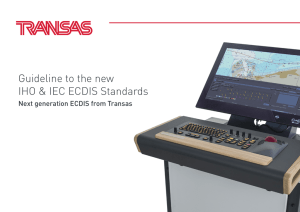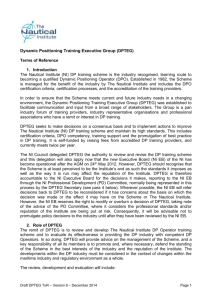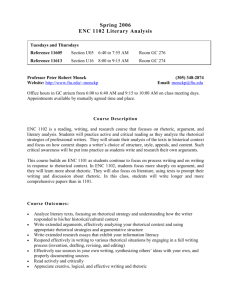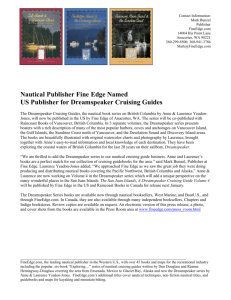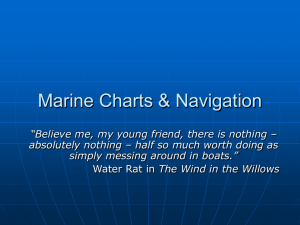report of visit to csmart almere
advertisement
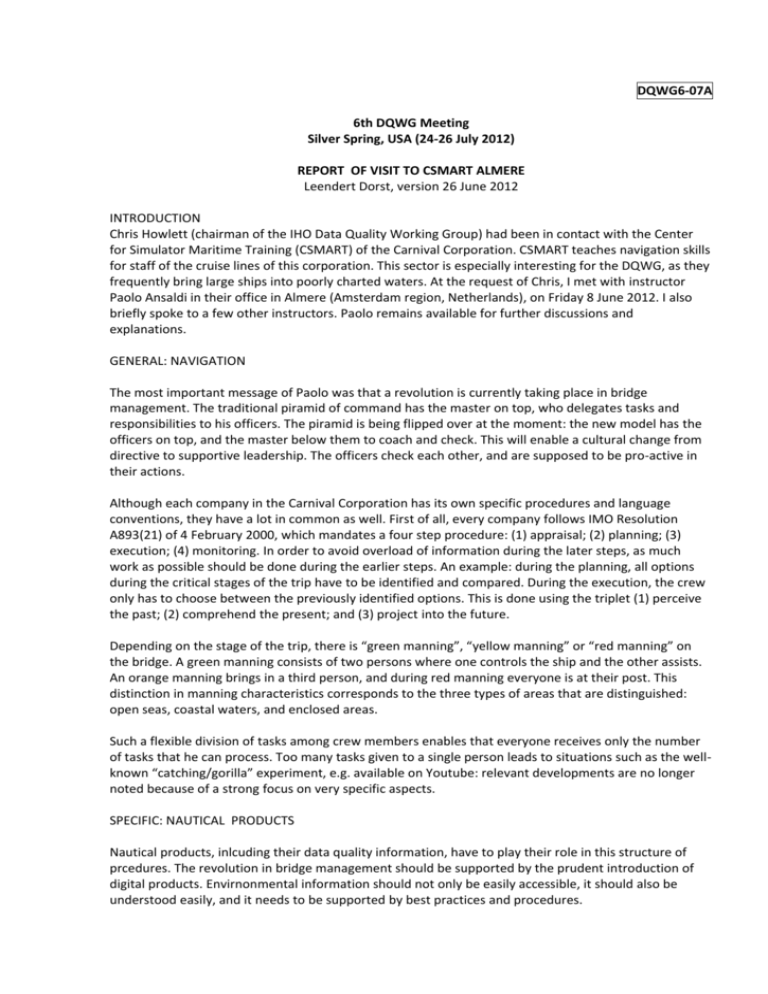
DQWG6-07A 6th DQWG Meeting Silver Spring, USA (24-26 July 2012) REPORT OF VISIT TO CSMART ALMERE Leendert Dorst, version 26 June 2012 INTRODUCTION Chris Howlett (chairman of the IHO Data Quality Working Group) had been in contact with the Center for Simulator Maritime Training (CSMART) of the Carnival Corporation. CSMART teaches navigation skills for staff of the cruise lines of this corporation. This sector is especially interesting for the DQWG, as they frequently bring large ships into poorly charted waters. At the request of Chris, I met with instructor Paolo Ansaldi in their office in Almere (Amsterdam region, Netherlands), on Friday 8 June 2012. I also briefly spoke to a few other instructors. Paolo remains available for further discussions and explanations. GENERAL: NAVIGATION The most important message of Paolo was that a revolution is currently taking place in bridge management. The traditional piramid of command has the master on top, who delegates tasks and responsibilities to his officers. The piramid is being flipped over at the moment: the new model has the officers on top, and the master below them to coach and check. This will enable a cultural change from directive to supportive leadership. The officers check each other, and are supposed to be pro-active in their actions. Although each company in the Carnival Corporation has its own specific procedures and language conventions, they have a lot in common as well. First of all, every company follows IMO Resolution A893(21) of 4 February 2000, which mandates a four step procedure: (1) appraisal; (2) planning; (3) execution; (4) monitoring. In order to avoid overload of information during the later steps, as much work as possible should be done during the earlier steps. An example: during the planning, all options during the critical stages of the trip have to be identified and compared. During the execution, the crew only has to choose between the previously identified options. This is done using the triplet (1) perceive the past; (2) comprehend the present; and (3) project into the future. Depending on the stage of the trip, there is “green manning”, “yellow manning” or “red manning” on the bridge. A green manning consists of two persons where one controls the ship and the other assists. An orange manning brings in a third person, and during red manning everyone is at their post. This distinction in manning characteristics corresponds to the three types of areas that are distinguished: open seas, coastal waters, and enclosed areas. Such a flexible division of tasks among crew members enables that everyone receives only the number of tasks that he can process. Too many tasks given to a single person leads to situations such as the wellknown “catching/gorilla” experiment, e.g. available on Youtube: relevant developments are no longer noted because of a strong focus on very specific aspects. SPECIFIC: NAUTICAL PRODUCTS Nautical products, inlcuding their data quality information, have to play their role in this structure of prcedures. The revolution in bridge management should be supported by the prudent introduction of digital products. Envirnonmental information should not only be easily accessible, it should also be understood easily, and it needs to be supported by best practices and procedures. CSMART teaches procedures for both ECDIS/ENC navigation and for navigation with (digitized) paper charts. In spite of the advantages of ECDIS, there are also points of concern: (1) an ECDIS shows an ENC on a small screen, which hinders the overview of the larger area of navigation; (2) planning on an ECDIS/ENC is complicated, because of the lack of tools that an ECDIS provides; (3) obtaining an ENC on board during the planning stage could be a challenge. The second point is illustrated by the way a paper chart is used to draw a navigation plan: areas that are too shallow are filled up with a striped pattern, and arrows are drawn on the edges of the safe zone. Each arrow gets an indication “NMT XXX°” or “NLT XXX°”, which stands for “course no more/less than ...” Many ECDIS systems still lack such functions, while nautical processes should be as similar as possible, irrespective of the medium of the nautical product. The third point is caused by permission issues. ENC-s come on board only shortly before a cruise. Preplanning often has to be done using an unofficial product. Some of these unofficial products are excellent, others are not. New editions of ENC-s are delivered to the ship on a CD in the next port. However, updates are received over the internet during the cruise. It happens that updates on such a new edition arrive before the new edition itself is received in the next port. In such a case, the update needs to wait. A work-around could have been to use the paper NtM to correct the old edition of the ENC. Unfortunately, this is impossible as the ENC update procedure is a “black box”. It is also felt that an ENC/ECDIS should automatically change its settings depending on the area: for each of the three types of areas/mannings, specific settings are in use. In line with the philosophy to “avoid overload of tasks or information by doing things as early as possible”, such settings should be made during the planning step, and automatically change during the transfer from one type of area to the next. The crews are aware that ENC-s sometimes have “anomalies”: information is incorrect for some reason. It seems that some types of anomalies are specific to the HO involved. The instructors wish to discuss such situations with their students in-depth. They see such discussions as the best way of teaching that the quality of the ECDIS, the quality of the product, and the quality of the underlying data cannot always be relied on. This is something inevitable, which needs to be solved by checks in the bridge procedures. CSMART calls on HO-s to share more examples of “anomalies”, for the sake of awareness of the inherent limited quality of nautical products. Although this can be counterintuitive to many HO-s, openness on those anomalies is invaluable during the training of nautical officers. MORE SPECIFIC: QUALITY INFORMATION IN NAUTICAL PRODUCTS The distinction between on one hand a sudden error in the presentation/product/data set, and on the other hand a known low quality of presentation/product/data set is important. Low quality could be fixed by proper warnings driven by quality information, errors can only be experienced, preferably as early in the process as possible. It gets really difficult when the two interact: For instance, CSMART has experienced that a SAM Electronics ECDIS shows Zones Of Confidence that are conflicting with the Zones Of confidence that a Sperry ECDIS presents, using the same ENC. Some cruise line companies even go so far as to identify critical areas with low data quality in the ENC, and hire a third party to perform a hydrographic survey for that area. This allows them to safely go places, in spite of the low quality of the data set underlying the nautical product. It is in the interest of the hydrographic community to convince cruise companies to share this data with the relevant HO as well. Inclusion in an official nautical product is the only way to use their proprietary data set correctly. It follows from the above that quality information in nautical products should be available during the planning step, not during the execution step. There is no time to study quality information during the critical parts of the trip, yet plenty of time before such parts. Visibility of quality information should be optional in an ENC that is available well before the trip. A multi-level approach is welcomed: the reason for the value of the composite quality parameter should be understood, in order to make the right decision. A low value of a composite quality indicator does not necessarily have to be a reason not to go somewhere. This should be decided on a case-by-case basis after studying the underlying parameters. The paper chart source diagram is therefore more appreciated than the single value of a Zone Of Confidence. A low quality area should not be called something similar to “no-go area” but rather something similar to “high-risk area”, as the first name would be conflicting with the own responsibility of the navigators to decide on their course. When entering a “high-risk area”, there are many other precautions that could be taken: double checks between crew members, visual checks, very slow speed, precise following of leading lights, additional knowledge from other sources or from one crew to the other. CONCLUSION CSMART supports the development of a new quality indicator, to improve navigation during the planning step. The composing elements of such an indicator should be discoverable, and all this information should be available well before the actual trip begins. In critical situations, an overload of information has to be avoided. In such situations, a crew only wishes to see a few predetemined options, which already should include quality aspects.
